In Washington, anglers do not count steelhead by the number of fish caught per day, but by fish caught per season. This grueling reality has earned steelhead the moniker “the fish of a thousand casts.” But this epithet is not a tribute to steelhead. Rather it is a dubious distinction because steelhead are not particularly hard to catch. They are just very hard to find.
It has not always been this way. A century ago, Washington’s rivers were teeming with steelhead. In those days, steelhead were so abundant that it was common lore that you could walk across rivers on their backs. Back then, steelhead were not “the fish of a thousand casts.”
However, a century of gross mismanagement has decimated steelhead populations throughout Washington. In places like Puget Sound, famed steelhead populations have been reduced to 3% of their historic abundance, despite the fact that 66% of the habitat remains. In the course of a lifetime, steelhead went from being too abundant to count to being listed under the Endangered Species Act (ESA).
The disappearance of steelhead is not a mystery. We are well aware of what has caused it. The National Oceanic and Atmospheric Administration (NOAA) – the federal agency charged with protecting this imperiled fish – have identified the four culprits responsible for steelhead’s precipitous decline – hydropower, hatcheries, harvest, and habitat loss.
Despite this understanding and the agency’s legal obligation to protect steelhead populations, NOAA is currently undermining critical federal regulations to breathe new life into one of their four identified steelhead culprits – government-operated steelhead hatcheries. The last thing ESA-listed steelhead need is more of what has caused their decline. So why NOAA is actively working to undercut federal protections to expedite approval of steelhead hatcheries is beyond perplexing.
What makes this decision even more egregious is that this approach is a significant departure for NOAA. For the last 11 years, NOAA worked rigorously to develop a comprehensive environmental review of the impact of hatchery programs in Puget Sound. This review was scheduled to be released in the spring of 2015, but at the last minute NOAA pulled the plug on this 11-year review.
As a substitute for this comprehensive review that encompassed the entire Puget Sound, NOAA is now conducting a cursory environmental assessment for three hatcheries in three smaller watersheds. NOAA is trying to justify their dramatic reversal as merely a minor adjustment in strategy. However, it is a far cry from that. It is a fundamental shift with significant implications.
Left unchecked, what this approach does is establish a precedent that can be used to rubberstamp the activities of hatcheries, without the scrutiny of a thorough and proper assessment. With precedent in hand, NOAA could then replicate this approach throughout Washington, Oregon, and California.
All that stands in the way of NOAA setting this dangerous precedent are the voices of anglers demanding that NOAA do their due-diligence to properly assess the impacts of hatcheries. Time is running out as the comment period for this environmental assessment closes on May 4, so it is imperative that anglers speak up now.
As anglers, we have the ability to conserve and recover steelhead populations. We can transform the dubious moniker of “the fish of a thousand casts” into the much-improved “the fish of a hundred casts.” To do that, our voices need to be used in moments like this. But time is not on our side. We must act now.
Submit your comments: Tell NOAA you will not stand for them undermining federal environmental protections for threatened steelhead .




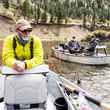
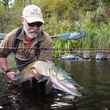





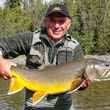
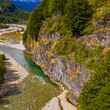








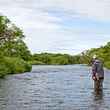
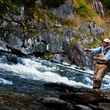



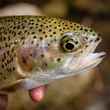
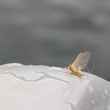

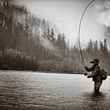
Comments
Steve Andrews replied on Permalink
Great article, Atlantic Salmon in our neck of the woods (Nova Scotia, Canada) are quickly becoming the fish of five thousand casts. Measures are being taken but I fear it will be proven "Too little, way too late". It's important for anglers to speak up and take action to help protect the species before it's too late.
Ken McLeod replied on Permalink
Quite to the contrary of what the WFC and their clown kronie constituents propagandize, hatcheries and hatchery fish are very important to the pnw ecosystems, the sportsman, and the economy. The science shows there is no significant interface between hatchery and "wild" fish, and the negative impact on "wild" fish has been categorized as minimal in the vast majority of WA state systems as a result. The WDFW has the data, and that's what the overwhelming consensus is regarding this issue. Historical results of removing hatchery fish from systems can be referenced from systems like the Cedar river, and the Puyallup wherein there once was a run, hatchery fish were removed, and today those runs are functionally extinct and provide no fishery. Lastly, people like me will be God struck out of heaven above before the WFC ends the fishery in Washington state with their propaganda. Folks can take that to the bank.
-Ken George McLeod
(Ken McLeod III)
Concerned replied on Permalink
I am concerned with your article, or rather your opinion. Now, I call it an opinion, because there are no references to these many "studies" that NOAA or your organization has done. WHY?? I am not privy to the sources to where you got your facts?
My main concern, is the fact that you reference these findings of NOAA, that they found the four culprits of decline, without proving the reference to that specific study.. I am sorry, but I won't take your word for it, I want to see the actual study you are referencing to, why keep that reference secret? If you would hyperlink to those studies I might take your opinions seriously. Because it is only an opinion with out references.
Provide the science, references and facts! Not your personal opinion.
Ken James McLeod II replied on Permalink
It's is interesting that you preach anti-hatchery & anti-harvest rhetoric (track history with Wa. Trout from the get-go) and collect a pay check from a "non-profit organization" now called WFC to pay your monthly bills being its Executive Director. Early-timed Chambers Creek stock does not interface with wild/native winter-run steelhead whatsoever despite your science claims. BTW, is that science paid for by you & cohorts through your organization? There are studies that dismiss your claims, but then I know you wouldn't acknowledge other science that says otherwise. The HGMPs need to be finalized and the WDFW PS steelhead program needs to go forward for the resource as a whole and for the vast multitude of its license-buying users, period!
Kurt Beardslee replied on Permalink
It’s true; all of us at Wild Fish Conservancy are deeply concerned about the problems hatcheries pose to wild steelhead recovery. We are not saying hatcheries are the only problem but they are a serious problem that can be resolved quickly. The risks are real, complex and substantive and year-by-year as the science advances more concerns continue to emerge. I would like our critics, to read the comments we submitted to NOAA yesterday (link attached below) and then decide for them selves if we missed or overstated anything thats covered in the peer-reviewed literature. These issues are far too important to wild steelhead recovery to continue simply because they are misunderstood.
I encourage anyone, friend or foe, that would like to talk about this over coffee to contact me at our office at 425-788-1167.
http://wildfishconservancy.org/what-we-do/advocacy/steelhead-hatchery-re...
Best regards,
Kurt
Kurt Beardslee
Executive Director
Wild Fish Conservancy
PO Box 402, Duvall, WA 98019
425-788-1167
www.wildfishconservancy.org
Ken James McLeod II replied on Permalink
I would encourage you to read the Steelhead Trout Club of Wa. letter sent to NOAA or anyone else for that matter for a better perspective on the entire issue, and what's at stake if the WFC (you & your anti-hatchery based cohorts get their way. But then Kurt, I know you very well from the get-go and all the anti-hatchery positions you've taken, to include trying to thwart lowland lake programs, the Grandy Creek Hatchery project and so on. Nope, not interested in hearing your same rhetoric. In this case, you are simply going too far and as a result the entire resource will suffer herein Puget Sound, as well as the vast multitude of anglers wishing to partake!
Pages